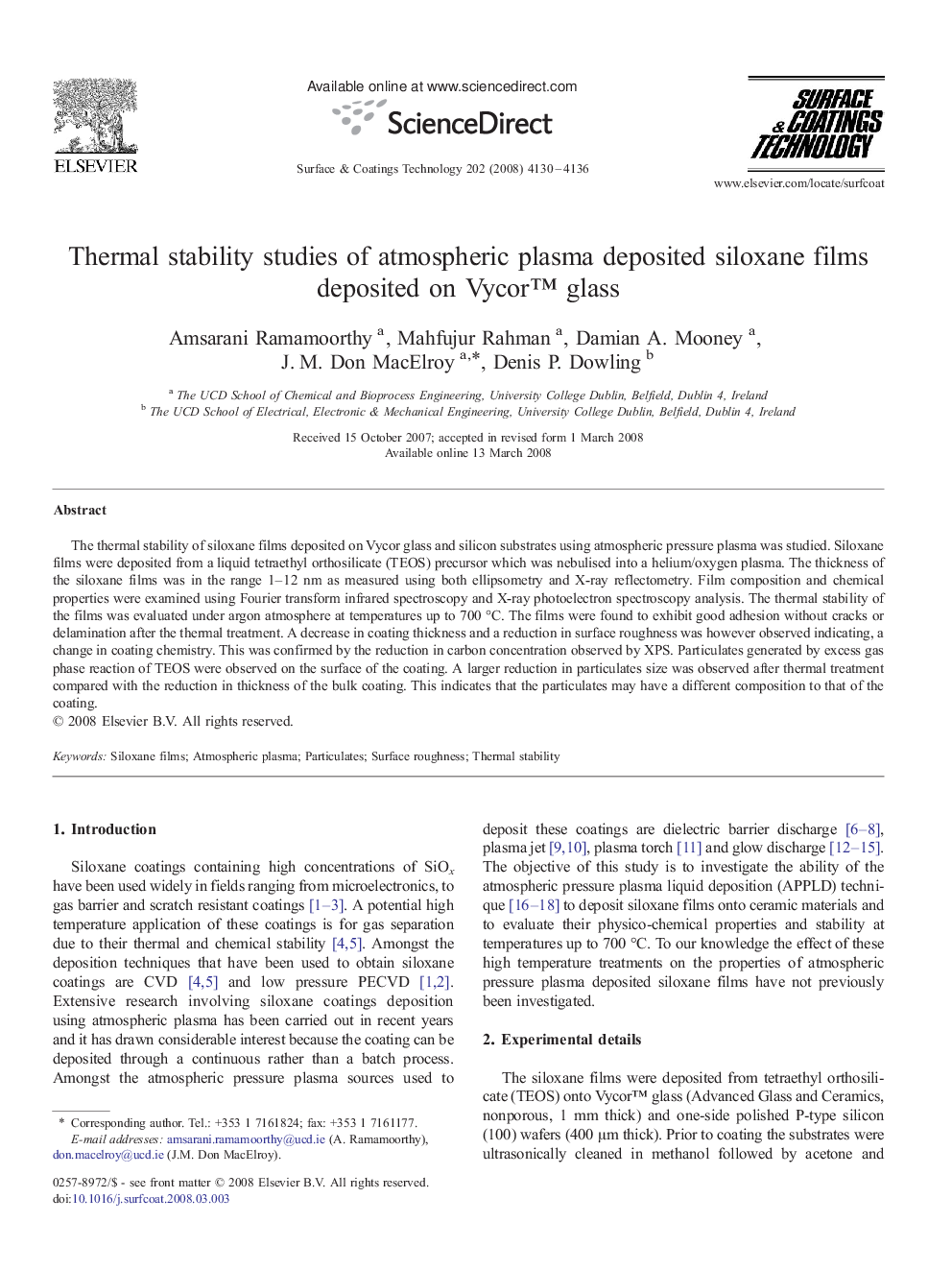| Article ID | Journal | Published Year | Pages | File Type |
|---|---|---|---|---|
| 1661222 | Surface and Coatings Technology | 2008 | 7 Pages |
The thermal stability of siloxane films deposited on Vycor glass and silicon substrates using atmospheric pressure plasma was studied. Siloxane films were deposited from a liquid tetraethyl orthosilicate (TEOS) precursor which was nebulised into a helium/oxygen plasma. The thickness of the siloxane films was in the range 1–12 nm as measured using both ellipsometry and X-ray reflectometry. Film composition and chemical properties were examined using Fourier transform infrared spectroscopy and X-ray photoelectron spectroscopy analysis. The thermal stability of the films was evaluated under argon atmosphere at temperatures up to 700 °C. The films were found to exhibit good adhesion without cracks or delamination after the thermal treatment. A decrease in coating thickness and a reduction in surface roughness was however observed indicating, a change in coating chemistry. This was confirmed by the reduction in carbon concentration observed by XPS. Particulates generated by excess gas phase reaction of TEOS were observed on the surface of the coating. A larger reduction in particulates size was observed after thermal treatment compared with the reduction in thickness of the bulk coating. This indicates that the particulates may have a different composition to that of the coating.
